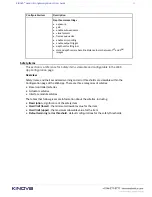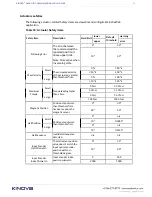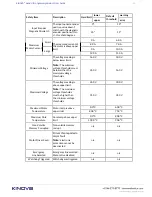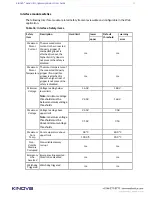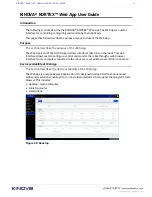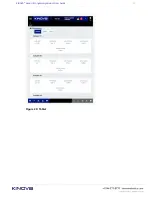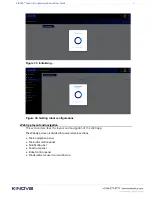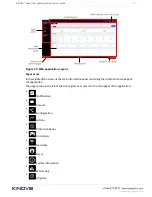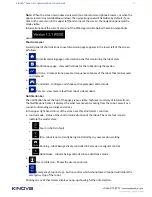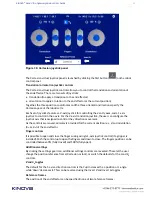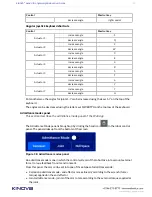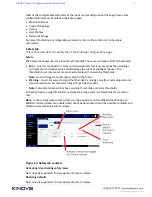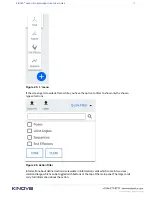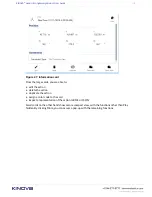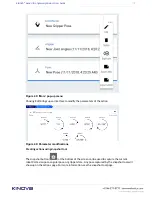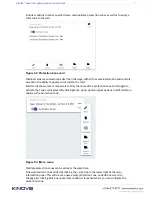
KINOVA
®
Gen3 Ultra lightweight robot
User Guide
96
Figure 36: Cartesian joystick panel
The Cartesian virtual joystick panel is launched by clicking the first button (
) on the robot
control panel.
Translation / orientation joystick controls
The Cartesian virtual joystick controls allow you to control the translation and orientation of
the end effector. There are two sets of joysticks:
• translation (to apply a translation to the end effector)
• orientation (to apply a rotation to the end effector at the current position)
Together, the three position coordinates and the three orientation directions specify the
Cartesian pose of the robotic arm.
Each set of joysticks features a 2-axis joystick for controlling the x and y axes, and a 1-axis
joystick to control in the z-axis. For the 2-axis translation joystick, the user can configure the
joystick axis that is assigned to control the y direction movement.
As the controls are moved, a display is provided for the current position (x, y, z) and orientation
(
θ
x
,
θ
y
,
θ
z
) of the end effector.
Finger controls
It is possible to open and close the fingers using a single 1-axis joystick control (if a gripper is
installed). Push the control up to open the fingers and down to close. The fingers position can be
controlled between 0% (fully closed) and 100% (fully open).
Additional settings
By clicking the settings gear icon, additional settings controls are revealed. These let the user
change the position reference frame (Cartesian or tool), or switch the defaults for the z and
θ
z
controls.
Z and
θ
z
toggles
The default for the 1-axis z-direction controls is that 'up' increases the z-position or z-angle,
while 'down' decreases it. This can be reversed using the Invert Z and Invert
θ
z
toggles.
Reference frames
The position of the end effector can be specified in one of two reference frames:


